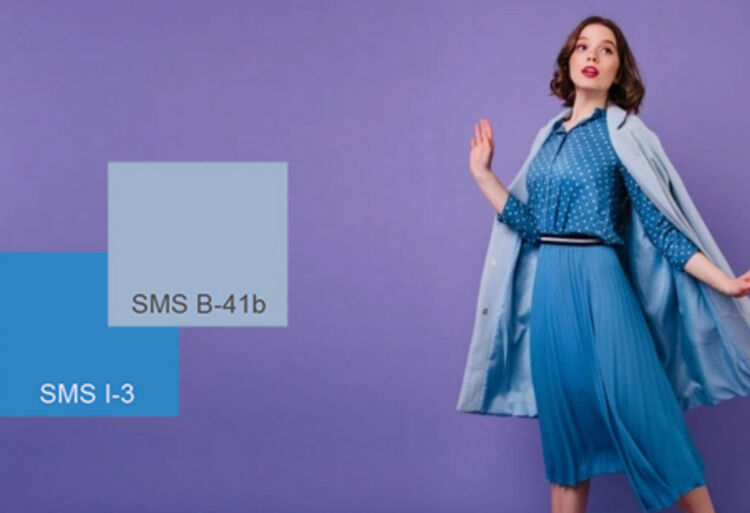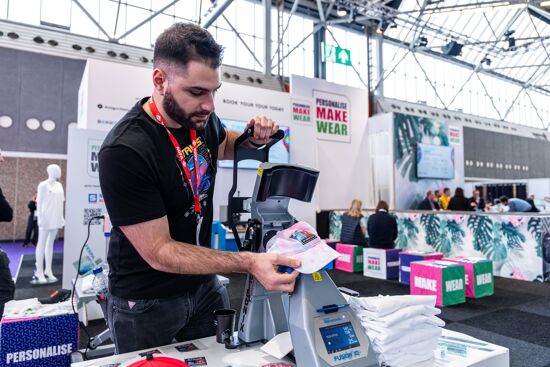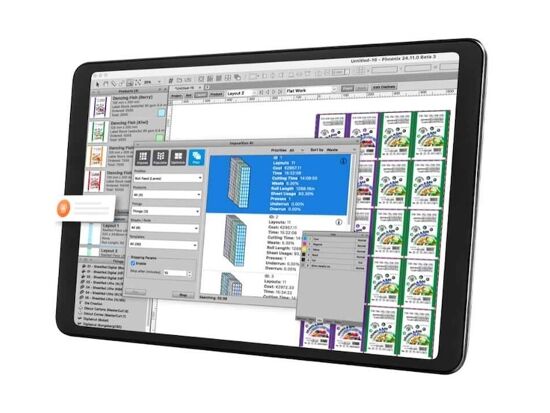Exploring Colour Management for the Metaverse and Omni Channel Retail to Reduce Returns

Debbie McKeegan discusses the growth of ecommerce in retail and the importance of online presence. Debbie also shares the challenges and opportunities in this sector.
The last few years have delivered many surprises, challenges, and opportunities. All of which have pushed our industry and its stakeholders into new territories. The biggest of which has to be the growth of ecommerce and a new commercial landscape for retail. Regardless of which industry you serve – online is the new off - and the digital space is accelerating beyond anybody’s imagination.
As new products are introduced, we find ourselves in a new world – a digital world that’s evolving faster than other supporting technologies and pipelines. In the digital space – products are virtual – created offline for online use. Much of this technology has evolved from the gaming industry, but its application and implications for ecommerce retail are immense and the online fashion consumer has high expectations.
 Caption: Non fungible tokens are products that only exist in a digital format. They take on many forms, from Art to Fashion and they exist to decorate a new online portal – The Metaverse. Image Credit: The Fabricant
Caption: Non fungible tokens are products that only exist in a digital format. They take on many forms, from Art to Fashion and they exist to decorate a new online portal – The Metaverse. Image Credit: The Fabricant
I first chatted with Michaela Larosse of The Fabricant (you can listen to the podcast here) about NFT’s last year. What’s an NFT you might ask? I use the term NFT here to define an entry point into a whole new universe - Non fungible tokens are products that only exist in a digital format. They take on many forms, from Art to Fashion and they exist to decorate a new online portal – The Metaverse. In the Metaverse anything is possible. But behind all the hype is an exploding retail environment, where NFT’s and Digital twins are often available as physical products, a new hybrid for the product designer, and this is where new challenges for manufacturing technology come into play.
Whilst the ecommerce boom has delivered incredible commercial success for many - it’s an environment that is fraught with operational hurdles and manufacturing issues.
But the biggest issue for online retailers are returns. An incredible 30-40% of all products sold are returned. This is no surprise to the industry, and online margins are adjusted accordingly. However – we are still manufacturing a huge amount of waste. It is not stock – it is now waste on demand. Many of the items returned will not be deemed fit for re-sale and in the instance of customisation, they will be of no resale value either, as they cannot be resold.
If we look at the fashion sector, the most common reason for return is incorrect sizing. The second is poor colour and that’s what we will focus on today. The impact of poor colour management must be addressed and resolved if we are to really switch to on-demand manufacturing and accurately replicate the digital twin.
What is the future impact of ecommerce on colour management? To answer this question and more, we turned to a number of industry experts to ask for their opinions on the issues surrounding colour management that will come to the fore as our industry switches to on-demand production for online sales. If we can improve colour accuracy, we will get closer to the consumers expectations – and reduce returns.
Firstly, we spoke to Mike Scrutton of Adobe and asked him for his thoughts on this subject:
“In a digital world, where the consumer purchases a garment from a website, without seeing it and trying it on before they buy, and where the garment is made “on demand”, it’s imperative that the customer is delighted with the result. Colours (and fit) must meet the customer’s expectations if we’re to avoid returns, which we’re not going to be able to resell if the garment was ‘made-to-order’.
Colour standards need to be used throughout the design and manufacture pipeline, and at present the most reliable way of showing the customer what they’re going to get, is to make samples of the garments with the same colour standards and photograph them – showing the photographs to the customer.
In the future, 3D simulations of the colour standards are possible, but we can only rely on them if we’ve first compared them to physical samples. Describing colour standards using their spectral definition will help, once the end-to-end pipelines support them at every stage”.
In conversation with Louis Prestia of Pantone who explained: “The impact of eCommerce on colour management has not really developed yet. You would think online customers would buy products online and be unhappy with the colour fidelity of the physical product, to the online representation of it, but that hasn’t really happened. This may be because the customer is still so thrilled with the idea of eComm and free delivery - but it is also probably reduced because of the free return policy of most eComm channels.
Louis continued: “There is a big opportunity here since if the eComm appearance could be colour managed and the customer experienced a better colour match when they review the physical product. This would save the retailer the cost of return and could drive the customer to purchase more from that eComm reseller because they could trust the colour match.”
.jpg?lang=en-GB) Caption: We asked Ingi Karlsson, MD of Spot Nordic the question: Can we currently calibrate our online viewing colour experience? “Only if you are using colours that fit within the standard sRGB colour space”. Image Credit: Spot Nordic
Caption: We asked Ingi Karlsson, MD of Spot Nordic the question: Can we currently calibrate our online viewing colour experience? “Only if you are using colours that fit within the standard sRGB colour space”. Image Credit: Spot Nordic
We asked Ingi Karlsson, MD of Spot Nordic the question: Can we currently calibrate our online viewing colour experience?
“Only if you are using colours that fit within the standard sRGB colour space - which is today the standard colour space for online viewing, - the one that most digital displays are capable of displaying, - even smartphone displays. If you use digital colours for your brand that are outside the colour gamut of sRGB you will only get an incorrect colour for a vast majority of viewers, should you post it online on your website or in your webshop = most viewers will not be able to see the actual colour, until they receive the physical product. With more and more custom-made products of the future there will be more and more need for the colours you see - either on your monitor or in your VR/AR goggles to be a really-close match to the physical product you receive”.
In conversation with Nick Langford, CEO of AVA CAD CAM LTD on the same subject we asked is it’s possible currently, to calibrate our online colour/sales experience?
“The technology exists but is not in widespread use. In order to calibrate a computer monitor to view colour reasonably accurately, you generally need colour management software, a spectrophotometer capable of measuring the colours displayed on the monitor, and a reasonably controlled ambient light environment. Many textile manufacturers have this technology and are already using it to communicate B2B with others in the supply chain. They are unlikely, however, to be using it to communicate colour accurately to consumers because they will assume (almost certainly correctly) that most consumers will be viewing their wares on an uncalibrated monitor or a mobile phone”.
 Caption: But progress is on the horizon, we asked Nick Langford: What does the future hold for colour science and industrial textile production?
Caption: But progress is on the horizon, we asked Nick Langford: What does the future hold for colour science and industrial textile production?
Nick’s comments aligned with my own thoughts and experience on this subject that being – as an industry we are not colour matching our virtual products for online sale, we don’t meet our consumers expectations and therefore we must be manufacturing waste.
But progress is on the horizon, we asked Nick Langford: What does the future hold for colour science and industrial textile production?
“As a first step, I would expect to see calibrated displays appearing more frequently at point of sale – allowing customers to view virtual catalogues with accurate colour. Looking further ahead, I would expect to see the development of ‘self-calibrating’ computer monitors becoming available to consumers at affordable prices”.
So, in summary - it would seem that in part, we have the technology, but we don’t have the demand. Virtual colour calibration for online product replication is its infancy and we are a long way off calculating the true cost of poor colour management. But we do now have a new category for the Metaverse – Virtual. Whether Virtual, Digital or Conventional – we now have three different colour standards that over the next few years must align if we are to have any hope of reducing waste.
Topics
Interested in joining our community?
Enquire today about joining your local FESPA Association or FESPA Direct
Recent news

Special Effects in DTF Will Make Your “Prints” More Memorable
The DTF market is expanding with new vendors and innovations like multi-head printers enabling diverse ink options (spot, neon). Decorative films offer streamlined special effects. Keypoint Intelligence tested metallic and glitter films, noting varied ease of use and wash durability. New technology using adhesive and foil directly promises further creative advancements in DTF.

SmartHub – Expectations, opportunities and why you should attend!
The SmartHub at Personalisation Experience 2025 in Berlin will showcase personalisation and smart production opportunities across industries like textiles. Featuring a Smart Factory Trail with brands like Inkcups and Trotec, and a conference with experts discussing AI, mass customisation, and profit strategies, it offers insights into reducing waste and boosting efficiency through digital methods. Panel sessions will explore growth, automation in textiles, and smart manufacturing.

How is AI revolutionising Large Format Print?
Nessan Clearly discusses how AI in print relies on data pattern matching, already enhancing software for large format providers. He predicts that this will result in increased AI integration in workflow planning, job queue management, colour correction, image upscaling, and predictive maintenance via sensors and vision systems, ultimately streamlining operations and offering greater flexibility.
.png?width=550)
Why are FESPA events the ideal place for visionaries to meet? With Harold Klaren from EFKA
We speak to Harold Klaren, International Sales Manager at EFKA about visionaries in print. Harold shares why he believes FESPA events are the ideal place for visionareis to meet.